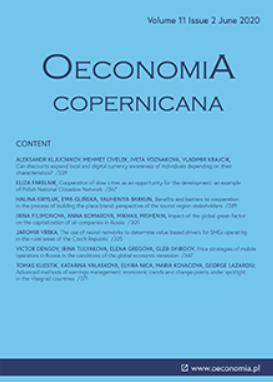The use of the dynamic time warping (DTW) method to describe the COVID-19 dynamics in Poland
The use of the dynamic time warping (DTW) method to describe the COVID-19 dynamics in Poland
Author(s): Joanna Małgorzata LandmesserSubject(s): Security and defense, Methodology and research technology, Health and medicine and law
Published by: Instytut Badań Gospodarczych
Keywords: COVID-19; coronavirus; regional analysis; dynamic time warping; clustering;
Summary/Abstract: Research background: In recent times, the whole world has been severely affected by the COVID-19 pandemic. The influence of the epidemic on the society and the economy has caused a great deal of scientific interest. The development of the pandemic in many countries was analyzed using various models. However, the literature on the dissemination of COVID-19 lacks econometric analyzes of the development of this epidemic in Polish voivodeships. Purpose of the article: The aim of the study is to find similarities in time series for infected with and those who died of COVID-19 in Polish voivodeships using the method of dynamic time warping. Methods: The dynamic time warping method allows to calculate the distance between two time series of different lengths. This feature of the method is very important in our analysis because the coronavirus epidemic did not start in all voivodeships at the same time. The dynamic time warping also enables an adjustment of the timeline to find similar, but shifted, phases. Using this method, we jointly analyze the number of infected and deceased people in each province. In the next step, based on the measured similarity of the time series, the voivodeships are grouped hierarchically. Findings & value added: We use the dynamic time warping to identify groups of voivodeships affected by the epidemic to a different extent. The classification performed may be useful as it indicates patterns of the COVID-19 disease evolution in Polish voivodeships. The results obtained at the regional level will allow better prediction of future infections. Decision makers should formulate further recommendations for lockdowns at the local level, and in the long run, adjust the medical infrastructure in the regions accordingly. Policymakers in other countries can benefit from the findings by shaping their own regional policies accordingly.
Journal: Oeconomia Copernicana
- Issue Year: 12/2021
- Issue No: 3
- Page Range: 539-556
- Page Count: 18
- Language: English

